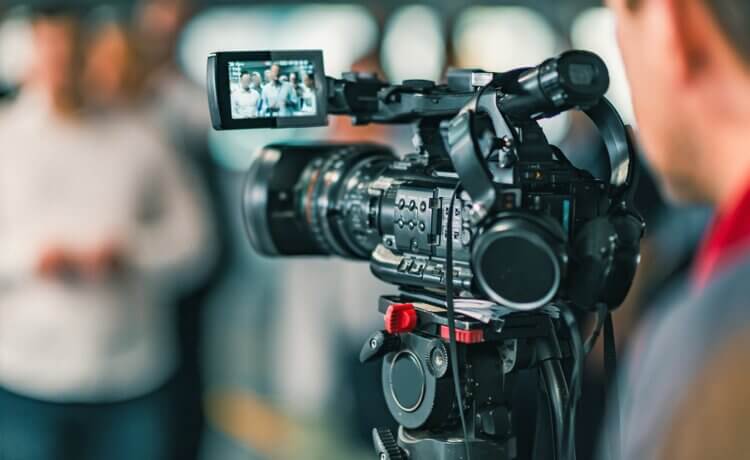Filming a documentary is more than just real-life camera footage, an idea, and a small audience to view it. Many more things go into the process, and filmmaking students or graduates need to have a solid background in education.
Firstly, you need to understand what a documentary comprises. It is a film or video based on a real-life non-fiction topic, whether it is a person or an event. Most of the filmmaking students are assigned to film a documentary as part of their degrees. Documentaries are for educational purposes which are detailed in nature. Here is a short guide on how to film your documentary.
Base Your Video on a Worthy Topic:
Choose your idea of documentary wisely so that the audience can relate to the content and it can touch their hearts. Avoid selecting a topic that you are unsure about and do have much content to film.
Make sure you are passionate about your topic. Think about whether your documentary will be grand scale or small-scale. Take more time and input effort in planning this part of the process so that your following procedures can go smoothly.
Make a Detailed Research On Your Topic:
Do thorough research on your topic before starting to film and collect content for it. Documentaries are supposed to be non-fictional, so your facts should be based on truth and genuine clips. Compile notes as you search and make sure nothing important is left out.
You can look up other similar documentaries for reference. Be prepared to put in some extra effort like interviewing a relevant person, check up on necessary literature, and so on. To be able to stand out among others, your story should be inspiring and emotional.
Create an Engaging Script:
Documentaries do not have a word-to-word script like movies and dramas may include. You are required to create an outline on how the direction will take place so that the protection crew can work according to your plan.
Make sure you decide on the following things to have an organized schedule.
- Where and when will the filming take place?
- Prepare questions for the people you will be interviewing.
- Mark the areas of the documentary where you wish to add a voice-over.
Plan Your Budget:
This step is the most crucial, especially for filmmaking students, as they operate on a tight budget. List out all the things required in your documentary and the expenses that come along.
Some of the common costs include equipment costs, studio fees, location permits, copyright fees, marketing expenses, props, production crew, catering, and much more. However, it may not cost you that much if you are aiming for a small-scale documentary.
Schedule and Film Your Documentary:
Although you may face some unwelcome situations when you are filming, it is still recommended to plan ahead of time. Schedule the time and date when you are supposed to meet up with people regarding the documentary. Make sure to get permission before you include pictures, music, and writings from other creators.
After the planning process has been completed, it’s time to take action. You can include clips of new and old interviews, public rallies, and showing people living their daily lives. The content of your video should have a natural flow instead of feeling all out of place. Another great idea is to film recreations to try to show the real emotions that the people felt in the past.
Edit Your Content:
Collect all your film footage and ensure that you are satisfied with the final results. The last step is editing, which should be done perfectly, so hire a music engineer or graphic designer if possible. Select the scenes where you require editing, such as including music, voice-overs, graphics, etc.
The small changes in your documentary can make a huge difference in its outlook. Focus on the influential scenes and cut out anything that might seem to drag.
Showcase Your Documentary:
Whether yours will be showcased in your university auditorium or a theatre, make sure that you present in a perfect manner. To ensure this, show it to your close friends or family to get feedback and an idea of how the public may react.
You can do marketing of your documentaries on famous online platforms like Instagram, YouTube, and any website. If you are targeting a grand-scale audience, look for theaters and other options to book yourself a spot.
Filmmaking Gadgets Best for Filmmaking Students:
Even though a filmmaking institute has some basic equipment ready for students and the rest, you have to get by yourself. You should have a basic knowledge of what kinds of things you might come across before you start your film school.
Firstly get the camera, then make a list of other gadgets necessary for your shoots. Every filmmaker has their own set of tools depending on what kind of story they wish to tell. As a student, you can rent out some gear as it can be expensive to afford everything. You can slowly upgrade your equipment when you start seeing good results. The equipment you purchase will become a valuable asset that can help you earn in the future.
Do not settle for the same equipment for a long time. Instead, test out new things and improve your filmmaking abilities. Here is a list of standard filmmaking gadgets that specify the basic needs of a filmmaking student and beginners.
Type of Camera:
You can begin with a mirrorless camera, camcorder, or a Nikon DSLR Camera at Georges Cameras. The camera you choose should have high-quality Full HD video-producing features. You can easily get your hands on a reasonable price camera model with a 4K video capability.
For beginners, some of the best mirrorless models include the Sony a6400 and FUJIFILM X-T30. Consider purchasing a GoPro camera to take some spots where your regular one might be difficult to work. When you have a flexible budget, it is best to go for a Canon camera like the C200 or Sony FS5 II. They are amazing at creating cinematic effects.
What Kinds of Lenses Would be Best?
You can go for a versatile kit zoom as it can help you get amazing results. No matter what kinds of lens you choose, mastering the technique will allow you to make tremendous success regardless of the camera you use.
For filming documentaries, you can search for parfocal and constant aperture features as it allows you to zoom your content. If you use a format besides the full-frame, you can use a 50mm or equivalent lens. Looking into how filters work along with your lenses will also prove to be quite helpful for filmmaking.
Audio Settings:
Besides video content, the quality of your voice recording should also be on top. Your main goal should be to achieve clear and high-quality audio for your videos. All your recordings should be handled with the best equipment. If you monitor the recording on the set by yourself, then purchase a great set of headphones. You can get great quality headphones like Sony MDR-7506 at a reasonable price.
To enhance your camera’s audio, get a camera mic and connect it with the camera’s input. A RODE VideoMic is the best option for recording mobile content and capturing ambient audio shots. When it comes to vlogging and interviews, lavalier is the top choice.
Camera Supporting Equipment:
You will need a tripod stand to film a video at the best angle. You can begin with a regular photo tripod and then upgrade it to a fluid head video tripod to achieve the best results. The main purpose of getting a tripod is to attain shots that do not look like regular videos.
Besides getting your desired angle, a tripod can provide support for your camera and keep it steady. Tripods are great to get your hands better on getting consistent footage. With constant effort and practice, you can take amazing shots without a tripod.
Add sliders and handheld gimbals to include steady movements in your videos. Sliders can be set up and used on your own easily. On the other hand, gimbals will allow you to capture the best shots even when you move around with your camera.
External Light Sources:
The standard lighting equipment can be heavy to carry around as it contains many tools. With the help of technological advancement, you can now build your own compact lighting kit. Using the latest LEDs, design your own lighting tool that you wish to use on set. LEDs have greatly replaced expensive lighting options like classic tungsten and fluorescent lights.
Consider getting some light stands and clamps to achieve the best cinematic results. Take your time and learn about the professional lighting techniques and gadgets that you want to purchase to achieve them. Also, make sure to figure out the cost of your assembling tools to stay within your budget.




